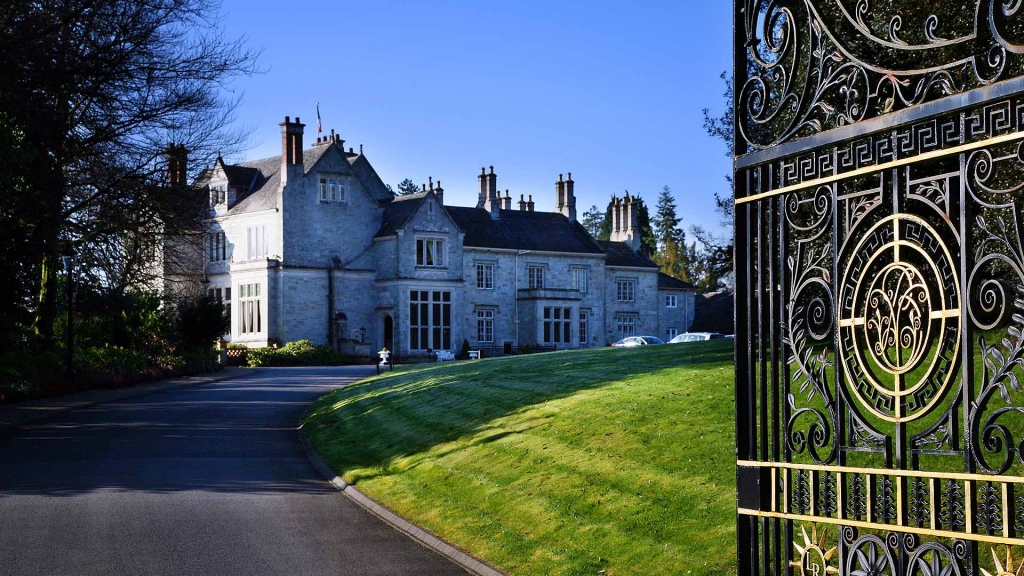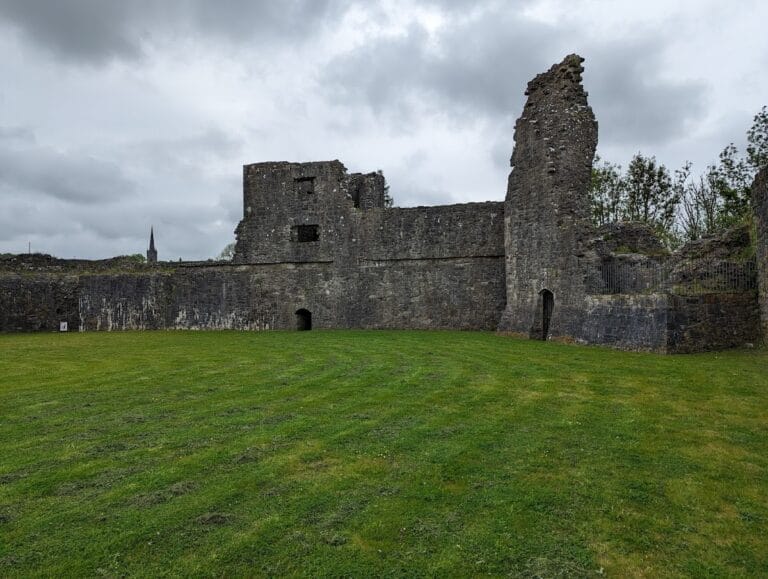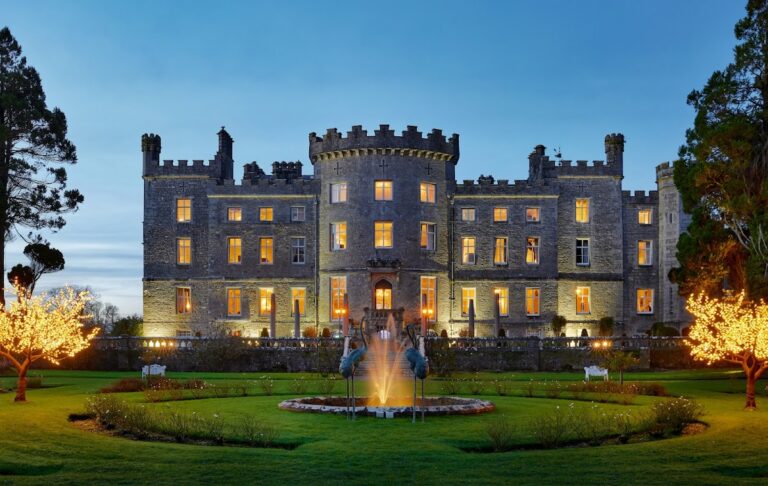Lough Rynn Castle: A Historic Estate in County Leitrim, Ireland
Visitor Information
Google Rating: 4.6
Popularity: Medium
Google Maps: View on Google Maps
Official Website: www.loughrynn.ie
Country: Ireland
Civilization: Unclassified
Remains: Military
History
Lough Rynn Castle is situated in the area of Mohill, Ireland, on lands historically associated with the Gaelic Mac Raghnaill family. This clan governed the territory known as Muintir Eolais in what is now County Leitrim before the English conquest of Ireland.
The earliest known fortification on the site was a crannóg, or lake dwelling, at Claenloch (now Lough Rynn), referenced in Irish annals dating back to 1247 AD. By 1474, records mention a stone castle belonging to the Mac Raghnaill family, indicating a medieval stronghold that served as a center of local power. During the late 16th century, the Mac Raghnaill allied with Aodh Mór Ó Néill in the Nine Years War (1594–1603), resisting English attempts to assert control over Ireland.
Following the war and the subsequent English Plantation policies, the Mac Raghnaill lands were confiscated in 1621 and granted to the English Crofton family. The Croftons introduced Protestant settlers and displaced many native Irish inhabitants by the 1630s, marking a significant shift in land ownership and population.
In 1750, the estate passed to the Clements family, descendants of a Cromwellian army officer. Robert Clements was elevated to the peerage as the first Earl of Leitrim in 1795. His descendant, Robert Bermingham Clements, Viscount Clements, constructed a Tudor revival style house on the site in 1833, which forms the foundation of the present castle.
William Sydney Clements, the 3rd Earl of Leitrim, inherited the estate in 1854 and managed a vast 90,000-acre property. Known for his strict and authoritarian approach, he enforced evictions and opposed land reform efforts, which led to widespread tenant unrest. His assassination in 1878 near Milford, County Donegal, was widely reported and is linked to the tensions between landlords and tenants during that period.
After his death, Colonel Henry Theophilus Clements, a cousin, inherited the estate and undertook extensive expansions and renovations in 1889. He added significant features such as the Baronial Hall, enhancing the castle’s grandeur. By the mid-20th century, much of the estate land had been sold to tenants, reflecting broader changes in Irish land ownership. The castle remained occupied until the 1970s, after which it stood largely empty until its purchase in 1990 and subsequent conversion into a hotel by 2006.
Remains
The site of Lough Rynn Castle encompasses both the remains of the medieval Mac Raghnaill stronghold and the later 19th-century mansion. The original castle, located approximately 500 meters from the current building near the lake shore, was constructed in a square plan with rounded corners designed to better withstand artillery attacks. This stone castle featured a distinctive straight stairway carved into a hollow within the wall, differing from the more common spiral staircases of the period. Today, the ruins of this medieval structure remain visible, offering a tangible link to the Gaelic rulers of the region.
The present Lough Rynn Castle, built initially in 1833 and expanded in 1889, includes a variety of notable architectural elements. The Baronial Hall, added during the late 19th-century refurbishment, is distinguished by heavy plaster cornices, a large ornate Inglenook fireplace, and a fretted ceiling complemented by English oak wainscoting. The principal floor houses a chapel, reception room, living room, and dining room, while service areas such as pantries, kitchen, study, smokehouse, and store are arranged with a separate entrance for staff access.
Upstairs, the castle contains fourteen bedrooms and four bathrooms, while the basement includes storage rooms and a wine cellar. The castle now functions as a luxury hotel, featuring 42 bedrooms, a baronial hall, a library named after the Irish writer John McGahern, a drawing room, piano room, bar, and restaurant.
The estate grounds are extensive and include a 400-year-old oak tree and a Bronze Age portal tomb known as Cloch an Draoi, or “Druid’s Altar,” dating from between 1900 BC and 300 BC. Additional features on the estate include sawmills, a farmyard, an arboretum, a greenhouse, French stable yards, nature trails, and terraced gardens. Two bridges, known as the Red Bridge and Blue Bridge, span the Rynn River, which connects Lough Erril and Lough Rynn.
A principal walkway on the estate passes by the crannóg in Lough Rynn and leads visitors to the medieval Mac Raghnaill castle ruins, a rockery, a wishing chair, and a large three-tiered walled garden overlooking the lake. These walled gardens, originally constructed between 1855 and 1860, were restored and reopened in 2008, now recognized as the largest privately owned walled gardens in Ireland.
Plans for an 18-hole golf course designed by Nick Faldo began in 2004 but were never completed due to financial difficulties. The grounds intended for the course are currently closed and overgrown, marking an unfinished chapter in the estate’s development.










